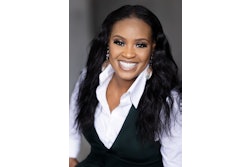Shameful Occurrences
While rummaging though our files in search of highlights to include in this anniversary edition, we also came across many, many shameful occurrences. Any reputable 15-year assessment of Black issues in higher education would be incomplete without at least a mention of some of these ignominious episodes. This is by no means a comprehensive list, and while we’re certain our readers will think of others, we thought the following 15 were worth noting:
1) Do as I say, not as I did Ordinarily this is sound advice from an elder who recognizes the error of his or her youthful ways. But the aphorism strikes a sour note when it comes from people who are quick to point out the flaws of a system only after they’ve reaped the benefits of it. In the past 15 years, a coterie of affirmative action beneficiaries have been among its most vociferous, latter-day critics. Among these, Supreme Court Justice Clarence Thomas, U.C. Regent Ward Connerly, former U.S. Department of Education Office of Civil Rights director Michael Williams, and professors Thomas Sowell and Shelby Steel. Their criticism of a system that has benefited thousands of African Americans, women, and other people of color, by enabling them to attend institutions that might otherwise have turned them away, would perhaps be less redolent if a reasonable alternative were proffered. Or if the inequities that led to the creation of affirmative action were no longer at play. Besides, has anyone heard these gentlemen say they were sorry for the opportunities they’ve personally enjoyed as a consequence of affirmative action?
2) Testing Woes In the past 15 years, most experts have come to agree that the biggest reason underrepresented minority students score, on average, lower than their White and Asian peers on college entrance exams is their lack of access to and participation in college-prep courses. African American and Latino students are (20.2 percent and 19.8 percent, respectively) less likely to be placed in college-prep tracks than their White peers (26.9 percent). On the SAT, the score disparity averages around 200 points. Only about 5,000 of the roughly 224,000 students (2 percent) who score 1200 or better on the SAT are African American (see Oct. 1, 1998 edition). Preparation for college entrance exams also involves taking preliminary tests. According to the College Board, African American students who take the PSAT have average SAT I scores that are 104 points above the averages of Black students who don’t take it.
Still, expanding the numbers of students who take any of these tests is an ongoing struggle. Though African Americans’ representation among college-bound seniors taking the SAT I has increased in recent years (from 8.2 in 1987 to 9.8 percent in 1998 according to The College Board), they continue to be underrepresented relative to their status among the traditional, college-age (18-24) population (14.3percent). The reason testing is such a big deal, is that many colleges and universities aren’t using them in the way they were designed to be used: as one of several factors to considered. Declining Black and Latino admissions at selective institutions where race-sensitive admissions practices have been banned, suggest that these tests are being used as a heavyweight proxy for merit, overriding other important indicators such as stellar grade point averages.
3) Worth-Less Grants Even though the average Pell grant award has more than doubled since 1977, the grant’s actual worth has declined by approximately 50 percent. Over the past two decades, the average Pell grant declined by 23 percent — adjusting for inflation — while college prices rose by 49 percent and family incomes crept up by just 10 percent. Not surprisingly, the trend is having a disproportionately detrimental affect on minority students. (See Black Issues, Dec. 10, 1998, pg. 16)
4) Women as Second Class Citizens
The Massachusetts Institute of Technology acknowledged in the spring of 1999, that a pattern of systemic discrimination has existed for years against female faculty in the school of science, one of the university’s five colleges. The discriminatory treatment manifested itself in everything from salaries and promotions, to office space and access to research money (see Black Issues, April 15, 1999).
5) Winners Can Be Losers Everybody loves a winner and colleges and universities are quick to boast when their athletic teams win championships. But rarely do they point out the abhorrent graduation rates among the athletes in their high profile, revenue-producing sports — especially their Black male student athletes. In general, collegiate coaches are given much greater incentives and rewards for winning championships than they are for improving the graduation rates among their players. Graduation rates among the nation’s top 25 football colleges are a perfect example of this misplaced priority. As was reported in the Jan. 21, 1999 edition of Black Issues, among the nation’s top 25 football schools, only four have student athlete graduation rates exceeding 70 percent. The average is 56 percent. And while six schools have Black male student athlete graduation rates exceeding 70 percent, the average is 46 percent. The University of Arkansas has the dubious distinction of being the worst of the lot, with a graduation rate among Black male student athletes of 6 percent.
6) Atwater must go! In 1989, then Howard University President James Cheek appointed Lee Atwater, the late chairman of the Republican National Committee to Howard’s board of trustees. Atwater was the mastermind behind the overtly racist “Willie Horton” advertising campaign during George Bush’s 1988 presidential campaign. After Cheek made the announcement, angry students staged a sit-in to remove Atwater from the board. Atwater eventually resigned, but students continued to sit-in to protest run-down dorms and demand a more inclusive curriculum. Cheek resigned the presidency later that year in 1989. (See March 30, 1989, p. 1)
7) The Politics of Endowments
In May, 1999, the University of Oklahoma announced that it would de-fund a $500,000 endowed professorship named for former law professor Anita Hill that had never been filled. Hill left the university in 1996. In their explanation for why they bowed out of the chair, university officials claimed the endowment wasn’t earning enough money to lure a nationally known scholar. The endowment was started in 1992 using state-government funds and gifts from supporters to hire a law-school professor who was an expert in sexual harassment and women’s rights. Behind the scenes, however, was conservative political activist Elmer “E.Z.” Million, who vowed to close down the law school unless efforts to preserve the endowed chair were abandoned.
“De-fund the Anita Hill professorship at the next regent’s meeting or face direct attack on the law school itself,” Million wrote in a faxed letter to the university’s president and board of regents.
The university voted to dump the Hill chair days after the fax was received. (See May 27, 1999, pg. 10.)
8) Cascading into a Segregated System The University of California — which has the distinction of being the nation’s leading producer of minority graduates, could soon become the first state university system to have re-segregated voluntarily. In 1995, even before Proposition 209 was passed (in 1996), the university board of regents voted to ban the use of affirmative action in admissions. As a consequence, in 1998, the first year that the ban applied to undergraduate applicants, the university’s flagship campus (UC-Berkeley) denied admission to more than 700 students of color who had SAT scores of 1200 or better and GPAs of at least 4.0. While alternative strategies to achieve diversity have yielded encouraging results at the system’s less competitive campuses, enrollment of Blacks and Latinos at the university’s most selective institutions (Berkeley and UCLA) continues to lag far behind where it was before the ban took effect. Experts predict that unless the current admissions policies at these campuses change, it could be years before the enrollment levels that had been reached prior to the ban are achieved again.
9) Open Mouth, Insert Foot Though professor Lino Graglia was found not guilty of racial harassment in 1998 by the University of Texas for his 1997 comments that Blacks and Latinos cannot compete with Whites because their cultures do not look upon “failure with disgrace,” his remarks drew criticism from around the country. Graglia eventually explained, in a published apology, that he did not mean to say that “Black and Mexican American ‘cultures’ do not place a high value on academic achievement.” But rather that “there are some group, sub-group, or class differences, for whatever reason, in the amount of time children typically spend at school or on school work.” (See Oct. 2, 1997, pg. 13, and Jan. 8 1998, pg. 6 editions.)
10) If You’re Black, You Must Be a Suspect In 1992 an administrator at the State University of New York College-Oneonta gave the names of all 125 Black male students to local police officers investigating an assault on an elderly woman who described her attacker as a young Black man. Over a four-day period, officers went to the homes and jobs of the Black male students to question them. (See Sept. 24, 1992, p. 3.)
11) Liar, Liar Even despite his ouster as interim director of the Bowie State University Foundation in July 1998, Russell A. Davis might have kept his job as vice president for student and academic affairs at Bowie State — if only he hadn’t lied on his resume. Davis was asked to step down from the foundation when an audit showed overspending in the 1997 fiscal budget to the tune of $63,869. But since most of the excesses had occurred before he took office, he wasn’t immediately asked to vacate the vice presidency. Surely accusations that he embezzled $3,873 from another non-profit organization he once headed, didn’t help his situation. But when it was revealed that he had, in fact, not earned master’s and doctoral degrees from the University of Maryland-College Park as he claimed, the charade was finally over. Bowie State initially hired Davis in 1988 as a counselor. He was appointed vice president for student and academic affairs in 1994.
12) Stung By Their Own Research: Earlier this year, a federal judge ruled that the NCAA’s freshman eligibility requirements were unfair because they disproportionately hurt Black student athletes. The judge’s decision was informed, in part, by the association’s own memos and reports which showed, not only that the eligibility requirements were unduly harmful to Blacks, but that there are other ways to improve student-athlete graduation rates. No doubt there are a few NCAA staffers running around saying “I told you so!” (See , April 1, 1999, pg. 18.)
13) Getting What You Pay For
During the past two decades, all but one of the states (Louisiana) have increased their funding for prisons at a pace that exceeds funding for higher education. In many cases, the funding for higher education has been cut while funding for prisons increased. Nationwide, the average ratio of funding for prisons versus education was 2.20-1.0. Texas emerges as the worst of the lot, spending on prisons over education at a ratio of 5.71-1. (see Black Issues, Jan. 7, 1999, pg. 12).
14) Battling Bands, Freaknik folly, and deadly ‘Greek’ games As if college and university administrators don’t have enough to worry about, the past 15 years have been marred by embarrassing, and sometimes deadly incidents involving students who’ve taken campus mischief too far. Members of marching bands have been the subject of police investigations for band-related hazing incidents, sanctioned for violent brawls after football games, and in one case even caught stealing while on tour in a foreign country. Black fraternity and sorority members have been the subject of numerous violent hazing incidents, some of which have resulted in deaths. On campus drug activity has resulted in some students matriculating into prison rather than graduate school. And events such as Freaknik, Spring Break in Daytona Beach, and the Greek Picnic, have been marred by arrests, property damage, rape, injuries and even death. Sadly, for some students, even jail-time isn’t enough to change their attitudes.
“If you suffer together, you play better together. … I was paddled. It was painful, true indeed. But it brought me closer to my peers and upperclassmen.” — Teddrick Page, former Marching 100 band member who in 1994, served 10 days in jail under a battery charge for punching out a fellow percussionist.
15) The Check is in the Mail
Disappointed students who thought they had won $10,000 academic scholarships had to find other sources of financial aid after the company that sponsored the awards announced that it did not have the money. Fifty-one students were promised “Scholar-Leadership Awards” by Val Adams, the founder of Adamsvision, USA, an event-planning company in January 1998. A year later, Adams sent a letter to the winners informing them that he “he wasn’t financially capable of honoring” the scholarships. This case did have a silver lining however. After media accounts of the missing scholarship money, several of the winners did receive financial aid from other sources.
*As ranked in a 1999 USA Today/ESPN report based on 1998 NCAA Division I Graduation Rates
— Compiled by Cheryl D. Fields and Michele N-K Collison
© Copyright 2005 by DiverseEducation.com















